Marks & SpencerŌĆÖs Bournemouth branch is one of its ŌĆśold ladiesŌĆÖ a typical forties-built high street shop that, in carbon terms, is a relic from a bygone age. They could have quietly closed it down and built a nice green ŌĆśeco storeŌĆÖ, complete with wind turbines and solar panels. But, as Stephen Kennett found out, M&S had other ideas ŌĆ”
Shoppers visiting Marks & SpencersŌĆÖ first ever green store might expect to find a building festooned with photovoltaic panels, micro wind turbines and solar thermal panels. But with the exception of some freshly planted trees outside, the odd recycling bin and some new signage like the one in the window that announces ŌĆ£When we refitted this store we recycled 80% of the wasteŌĆØ there is little to distinguish this branch from any of its other high street stores.
So is this just another story of greenwashing, a PR stunt to give the retail giant some sustainability credentials? Far from it, says Crispin Burridge, the retailerŌĆÖs head of sustainability. He explains that, while a lot of stores are focusing their energies on influencing the design of their new-build stores, M&S wanted to take a typical existing store and see what it could achieve in a standard remodel. ŌĆ£It would have been much easier to make the wins on a new build and talk publicly about that but the biggest challenge for us is improving our existing portfolio,ŌĆØ he adds. After all, if M&S could achieve what it wanted to achieve in Bournemouth, it could achieve it pretty much anywhere.
The greening of Bournemouth coincided with the launch of the retailerŌĆÖs Plan A sustainability campaign in January this year. This is a ┬Ż200m project to make the company carbon neutral by 2012, which will impinge on everything from where it sources its goods to the packaging it uses and the buildings it occupies. Under Plan A, Bournemouth became a pilot project to turn these aspirations into reality. If successful, the lessons learned would be rolled out across the groupŌĆÖs 550 stores.
ŌĆ£It was an exercise in applying good engineering to turning it into a better store in terms of energy performance in the time we had available,ŌĆØ says Burridge. Time was always a critical factor. The team had just 10 months in which to explore what options were most feasible and to get them operational in time for October and the start of the Christmas trading season. ŌĆ£Time was always at the back of our minds. We could either have come up with a bigger scheme and probably not even started it until the following year or seen what we could learn in the very short time that we had and then continue to build on.ŌĆØ
The target M&S set itself was a 25% reduction in energy use, based on the historical half hourly energy readings taken for the store. This was never going to be straightforward. The Bournemouth store was a bit of a dinosaur, what Burridge refers to as one of its ŌĆ£old ladiesŌĆØ. At 70,000 ft2 of selling space, the 1940s building was typical of what most customers would see up and down the UKŌĆÖs high streets, falling somewhere between the retailerŌĆÖs smaller Simply Food outlets and its flagship out-of-town stores. It was for this ordinariness that it was chosen. The question was: could it be transformed into something out of the ordinary?

Lighting
The three biggest energy guzzlers for most retailers are lighting, refrigeration and the combination of heating, ventilation and air conditioning. These became the priority.
Retailers are particularly sensitive to lighting in stores itŌĆÖs one of the key tools for enticing buyers and any changes definitely couldnŌĆÖt affect the bottom line. ŌĆ£I think we have learned lessons from some of our earlier retail parks where they were a little too dark and we had to retrospectively change them,ŌĆØ says Burridge.
At Bournemouth light levels on the shop floor have been reduced from the usual 1000 lux to 800 lux. Along with more efficient control gear, the original 70W lamps in the spotlights were replaced with 35W units and T5 fittings have been used throughout. Lighter coloured vinyl flooring (BREEAM A-rated) is fitted to compensate for the reduced light levels and create a lighter feeling. Carpeting is only used in the fitting rooms and lingerie areas.
The way the lighting is controlled has also changed. In the fitting rooms, passive infrared sensors detect when someone is present and turn the lights on, dimming them again when they leave. In the display windows daylight sensors only turn on the lighting when it becomes dark outside, and itŌĆÖs the same in the toilets, baby-changing areas and the backstage areas of the store. The lighting levels for refilling and restocking out of hours have also been tailored to reduce energy consumption. In another shift to cut down on the amount of artificial lighting, sunpipes have been installed in the offices areas to bring more natural light into the spaces.
Refridgeration
In large food stores refrigeration can account for up to 40% of the total energy consumed. At Bournemouth the design teamŌĆÖs hands were tied as the store had recently undergone a renewal of its refrigeration cabinets and plant. ŌĆ£It wasnŌĆÖt environmentally or cost effective to rip it all out and start again,ŌĆØ says Burridge. Instead, the existing plant has been modified to take carbon dioxide refrigerant, rather than conventional hydrofluorocarbons.
It might seem a bit perverse to use CO2 in the refrigeration system when itŌĆÖs one of the main greenhouse gases, but HFCs have a global warming potential 3,600 times greater. The thinking goes: if the system leaks, it will do a lot less damage to the environment. On top of the lower global warming potential, running the equipment with CO2 refrigerant is also claimed to be more energy efficient, due partly to the smaller compressor sizes and the evaporators running at higher temperatures. ŌĆ£ItŌĆÖs early days and the engineers wonŌĆÖt make any commitments,ŌĆØ says Burridge. ŌĆ£But we hope to prove in a relatively short space of time that we will get improvementsŌĆØ.
Other measures that have been introduced as standard practice include night blinds for all the open refrigeration cabinets to prevent cold air from spilling out during unoccupied hours. This, it is estimated, can reduce energy demand in these periods by up to 70%. Weir guards are also fitted. This is just a simple Perspex strip that runs around the well of the fridge, again reducing cold air from spilling out into the aisles a 4% saving during the daytime.

Air-conditioning
Most shops have a year-round cooling load due to the heat given off by occupants, lighting and equipment. In a change to normal practice and to help cool the shop floor more efficiently, M&S has installed a displacement ventilation system. Unlike conventional fan coil units that blow cooled or heated air down onto occupants, a displacement system introduces cooled, fresh air at low level and then relies on the movement and heat from the occupants to warm the air, which rises up to be extracted at high level. The benefit of this approach is that only the volume occupied up to head height needs to be conditioned and the chilled air can be introduced at slightly higher temperatures than normal. The drawback is that for it to be effective you need relatively high floor-to-ceiling spaces and a means of introducing the air at low level.
At Bournemouth, M&S has only been able to install the system on the ground floor where it has floor-to-ceiling heights in excess of 3m. The solid floor slab made introducing the air at low level tricky and it has got around this by developing a neat column-based system. A perforated metal casing wraps around the structural column and the air is allowed to filter out through the perforations. ŌĆ£Traditionally as retailers we would probably fit the column as tightly as we could with an MDF panel system and sell merchandise off it,ŌĆØ says Burridge. ŌĆ£ItŌĆÖs a very different use of shopfit for us but something we can retrofit to other stores.ŌĆØ
The other thing the design team has done is to try and harness the buildingŌĆÖs thermal mass. The traditional suspended ceiling has been replaced by a plasterboard raft system. This is 40% solid, 60% voids. As well as cutting down on raw materials, it provides a path for the warm air to rise up and come into contact with the cooler concrete slab of the floor above. ŌĆ£Rafted ceilings are more normally found in retail parks so one of the things weŌĆÖre doing is monitoring quite closely how our customers will react to that change in environment,ŌĆØ says Burridge. ŌĆ£Hopefully if weŌĆÖve lit the store well and the merchandise is exciting our customers wonŌĆÖt be looking at the ceilingsŌĆØ.
Water
Water consumption was another target on the design teamŌĆÖs radar. When it first embarked on the project the idea of rainwater harvesting was considered but found not to be cost effective. ŌĆ£We also couldnŌĆÖt find space for the storage tanks, which is typical of the sort of problems weŌĆÖre going to come up with when doing a high street store remodel,ŌĆØ says Burridge.
It has, however, managed to introduce water-saving devices. Dual flush toilets have been installed throughout. Sensor taps were also fitted, but after two weeks they had all broken. ItŌĆÖs the sort of lesson Burridge is keen to learn. ŌĆ£Customers kept pressing the sensors thinking they were buttons,ŌĆØ he explains. These have now been replaced with low-flow percussion taps. Another area of ongoing study is the passive infrared detection system used to trigger the flushing of the urinals. This will be evaluated on cost versus water saving to see if it is economic to install individual sensors to each unit rather than flushing a whole bank each time one is used. Together these measures are anticipated to reduce consumption by 15%, or 500m3 a year.

The missing renewables
So what about the areas that Burridge and his team havenŌĆÖt been able to exploit? On-site renewable technology is certainly one. Measurements were taken at the design stage to assess the feasibility of installing a wind turbine. The installation would have produced around 1% of the storeŌĆÖs electricity needs. ŌĆ£It wasnŌĆÖt thought worthwhile and would have been tokenism,ŌĆØ says Burridge. Biomass, photovoltaics, combined heat and power and small scale wind turbines however are on the cards for the future. ŌĆ£We really think on-site renewables are one of the things we can deliver and weŌĆÖre going after that.ŌĆØ
The next step for Burridge is to roll some of these initiatives out across the companyŌĆÖs existing stores. These have been broken down into three categories. ŌĆ£There are the no-brainers that will go straight into our specification for next year; and some things that look to be sensible but that need a little time to be evaluated; then there are the things that we havenŌĆÖt been able to trial in any of the three stores that we know are on our agenda and we need to get after.ŌĆØ
So just how much less energy will the Bournemouth store use? A post-occupancy survey will be carried out once the store has been up and running, but itŌĆÖs anticipated that the 25% target will be achieved. On top of this the company will be purchasing renewable electricity, which will see CO2 emissions drop by 92% the remaining 8%, or 83 tonnes, will come from the gas powered boilers.
Early next year two other green trial stores are due to open, a Simply Food store in Galashiels in the Scottish Borders and a retail park anchor store in Polloch in the Highlands. While these new-build stores might have more environmental bells and whistles, M&S hopes that Bournemouth will show that a little pragmatism can go a long way.
Waste watchers
Only 20% of construction waste ended up in landfill when the Bournemouth M&S store was remodelled. It achieved a 5% improvement on the retailerŌĆÖs average for a remodel through site waste management plans and segregated skips. This is a 5% improvement on the retailerŌĆÖs average for a remodel. The aim is for zero landfill waste within five years.
Materials were also carefully selected. Items such as vinyl flooring, carpets and hard tiling were selected to achieve an A on BREŌĆÖs energy assessment methodology, as was the plasterboard partitioning. Framing to ribbon wall panelling is made from formaldehyde-free MDF certified by the Forest Stewardship Council (FSC), and recyclable plastic shelving is used in the store.
ŌĆ£One of the lessons learned is that FSC is easier to say than it is to deliver,ŌĆØ says Burridge. ŌĆ£I think a lot of our suppliers are supplying us with FSC products but what we havenŌĆÖt been able to do is to audit and fully comply with the chain of audit rules that FSC asks for. That is a real focus and push for us in the coming weeks.ŌĆØ
Topics
Retail Supplement Nov 2007
- 1
- 2
- 3
- 4
- 5
- 6
- 7
- 8
 Currently reading
Currently readingThereŌĆÖs life in the old girl yet ŌĆ”
- 9





















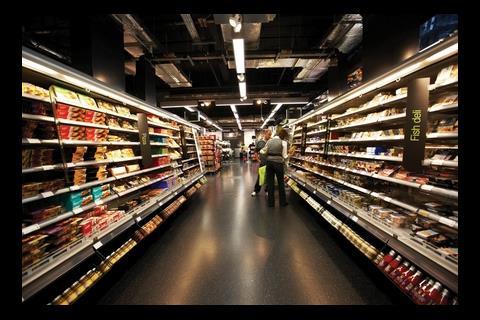
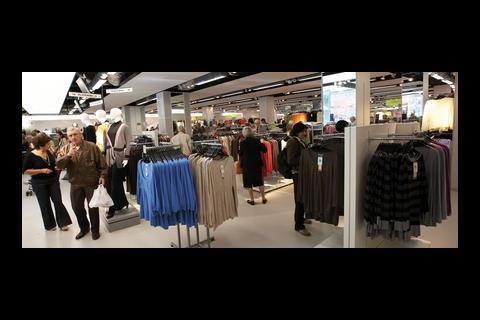
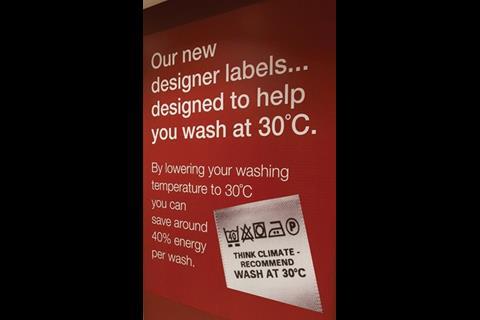

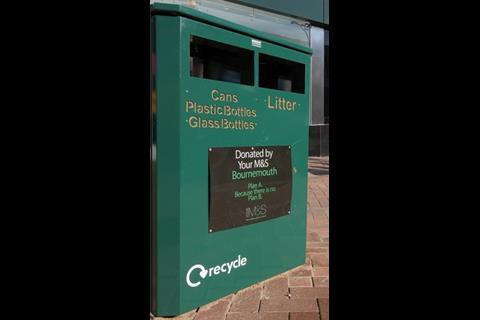
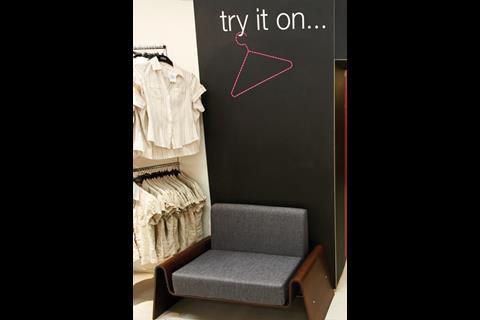
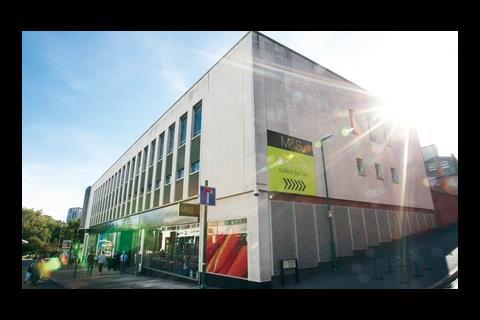
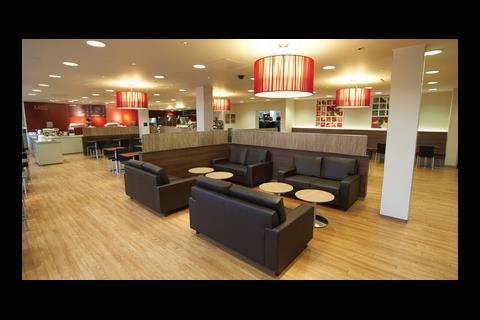
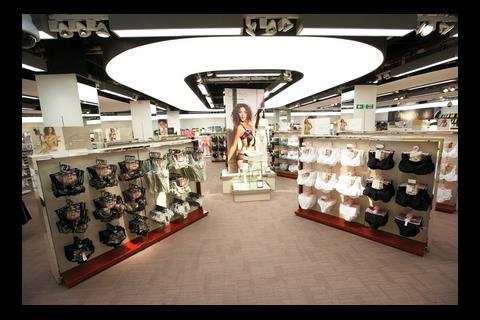














No comments yet